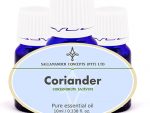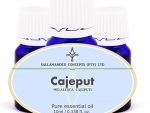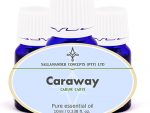Information on Tagetes essential oil
Tagetes essential oil is extracted from Tagetes minuta (also known as Tagetes glandulifera) of the Compositae family and is also known as marigold, Mexican marigold and taget.
It is often confused with calendula oil, which is Calendula officinalis, also known as “true marigold”.
Although very few people buy Tagetes Essential oil for the fragrance, it is a very effective oil when used in cases of infection and especially weeping wounds and chest infections.
Oil Properties of Tagetes essential oil
Tagetes oil has a wild, sweet, fruity almost citrus-like smell and is yellow to reddish-amber in color. It is of medium viscosity that can turn thick and even gel-like if exposed to the air for a long time.
Origin of Tagetes essential oil
Known in Africa as ‘Khaki bush’, it is now also grown in France and North America and is known as a weed with deeply divided deep-green feathery leaves and numerous yellowish-orange carnation-like flowers.
The leaves and flowers are a good insect repellent and are often seen hanging from huts to deter swarms of flies and mosquitoes.
After the Boer war in South Africa, Australian troops brought plants to their native land where it grew profusely.
It is an ingredient of many foot treatment preparations and is also used in some perfumes.
Extraction
This essential oil is extracted from the leaves, stalks and flowers, picked when the seeds are just starting to form.
Chemical Composition
Some of the main chemical components of Tagetes essential oil are: Dihydrotagetone, (Z)-β-Ocimene, (E)-Tagetenone + (Z)-tagetenone
Precautions
Tagetes oil is a very powerful oil and should be used extremely sparingly on the skin . Not to be used on a sensitive skin and will cause photosensitivity. Cases of dermatitis have been reported.
The maximum dilution rate for the topical use of Tagetes essential oil is 0.01% – it is photo-toxic.
We suggest that this oil only be used in room odorisers.
Please read our page with heading: Safety with Essential Oils before using this oil.
We recommend the following book as an excellent resource regarding safety:
Essential Oil Safety: A Guide for Health Care Professionals by Robert Tisserand & Rodney Young (#ad)
Therapeutic properties
The therapeutic properties of Tagetes oil are anti-infectious, anti-microbial, antibiotic, anti-spasmodic, anti-parasitic, antiseptic, insecticide and sedative.
For our glossary and explanation of these therapeutic terms, please click here
Uses
This essential oil is valuable in keeping insects at bay, and can help with parasitic and fungal infestation.
The maximum dilution rate for the topical use of Tagetes essential oil is 0.01% – it is photo-toxic.
It is used for chest infections, coughs and catarrh, dilating the bronchi, facilitating the flow of mucus and dislodging congestion and can be used in cases of skin infections.
It has a healing effect on wounds, cuts, calluses and bunions.
Burners and vaporizers
In vapor therapy, tagetes essential oil can help with coughs, bronchitis, chest infections and as an insect repellant.
We recommend using Tagetes oil as a room odoriser and to not exceed 8 drops in your device of choice.
Blended in Massage Oil or in a Bath
The recommended dilution rate for healthy adults is 0.01% – this makes it rather pointless to use this essential oil via this method. Do not use topically on children under 7 years of age.
Blended in a Cream
When used in a cream or lotion, it can have a most beneficial effect on fungal and microbial infections and especially helpful when treating weeping wounds. The maximum recommended dilution rate is 0.01% for topical use. It may be advisable to use an alternative. Do not use topically on children under 7 years of age.
Summary
Tagetes oil can be useful for treating the respiratory system, infections of the skin and as an insect repellent. The maximum dilution rate for the topical use of Tagetes essential oil is 0.01% – it is photo-toxic.
Blends
Although essential oils normally blend well together, Tagetes essential oil blends particularly well with Clary Sage, Jasmine, Lavender, Lemon, Myrrh, and Mandarin.





